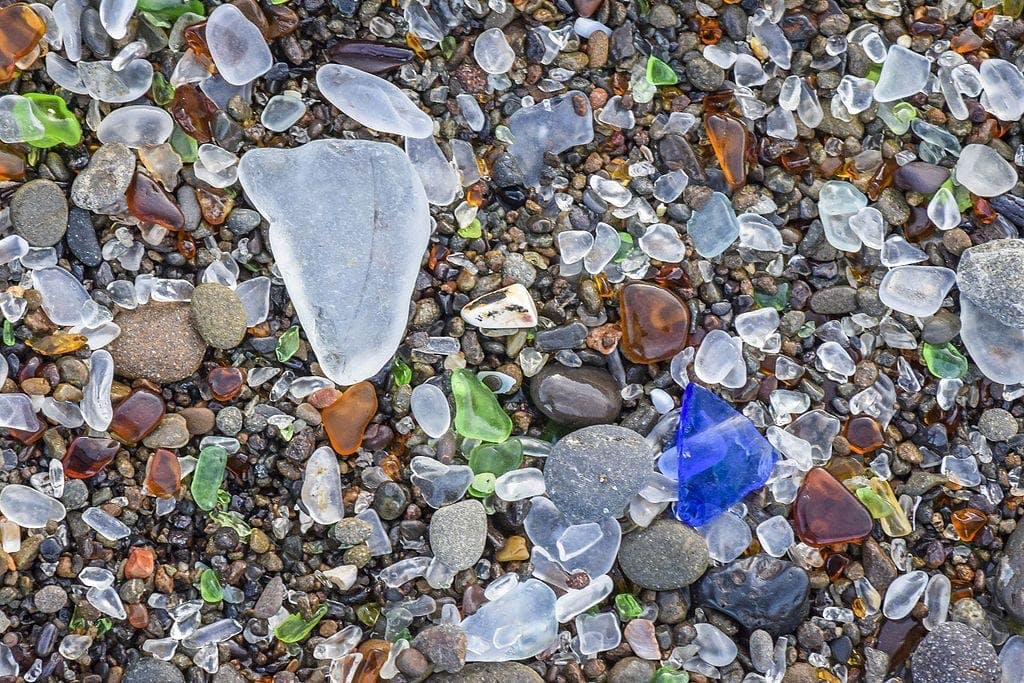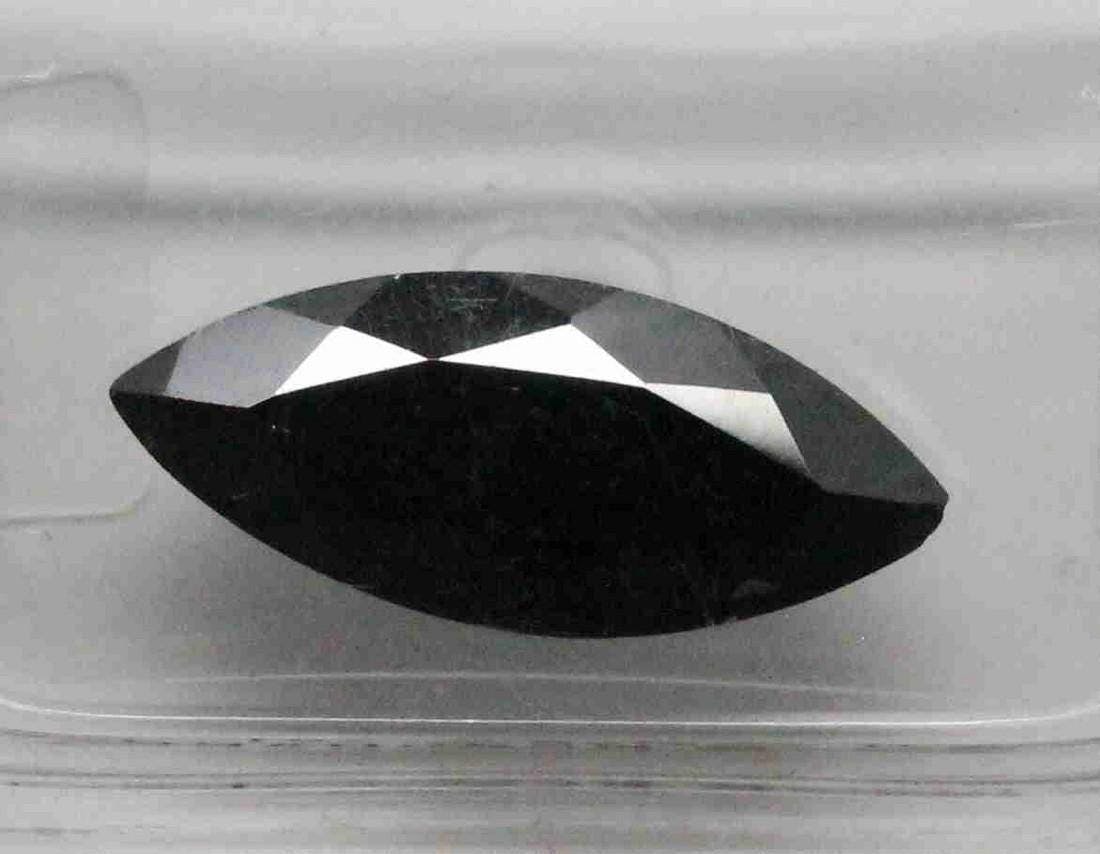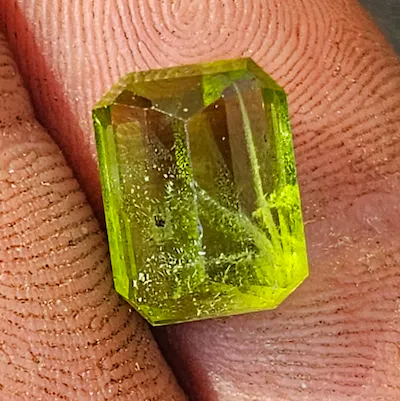News
Glass gemstones in jewelry throughout history
Glass gemstones have a rich and fascinating history in the world of jewelry. Throughout thousands of years, glass has been a beloved material for adorning oneself with shimmering beauty. What makes glass gemstones even more captivating is the ability to enhance their color, vibrancy, and durability by adding various additives. Unlike natural gemstones, glass gemstones have a low value and are typically sold by piece rather than by carat. Their physical and optical properties differ from their natural counterparts and can often reveal telltale signs of their manufactured origins, such as inclusions and mold marks. With a myriad of trade names and varieties like Aurora Borealis, Goldstone, Rhinestone, and Uranium Glass, glass gemstones can imitate the look of different gemstone colors and effects through treatments. However, cleaning these unique gemstones requires extra care, as different pieces may have treatments that react poorly to certain cleaning methods. Through it all, the allure of glass gemstones continues to captivate jewelry enthusiasts with its vibrant beauty and rich history.
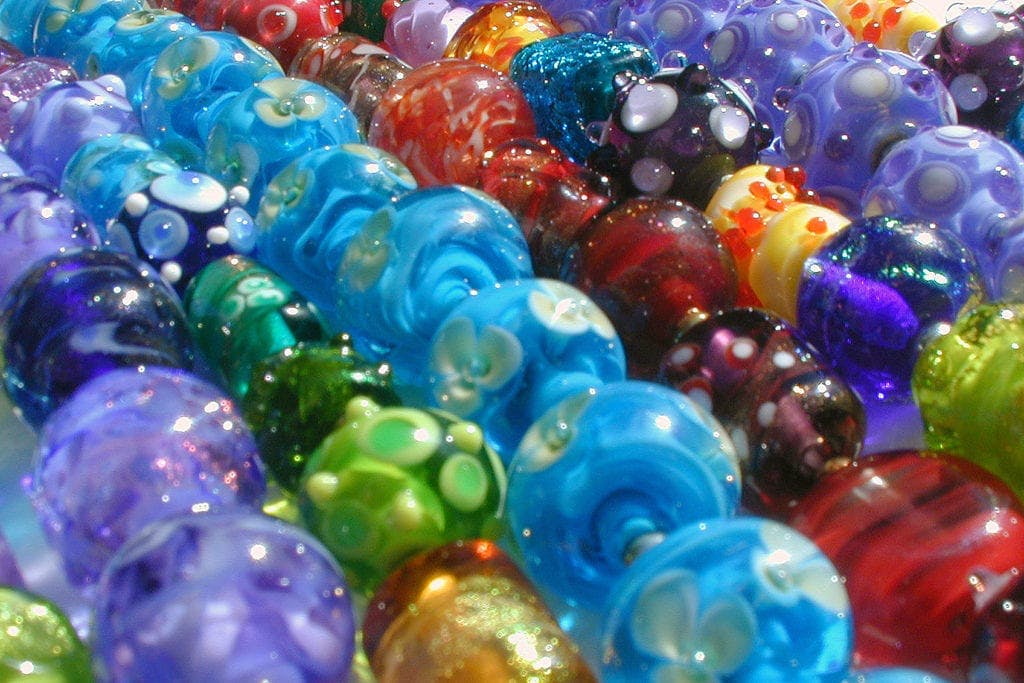
History of Glass Gemstones in Jewelry
Ancient Origins
Glass has been used in jewelry for thousands of years, with evidence of glass beads dating back to ancient Mesopotamia and Egypt. These early glass beads were crafted using a variety of techniques, such as winding molten glass around a metal rod or pressing melted glass into molds. The use of glass in jewelry expanded throughout the ancient world, with the Romans and Greeks incorporating glass beads and stones into their intricate jewelry designs.
Medieval Period
During the medieval period, the popularity of glass gemstones in jewelry continued to grow. Glassmakers across Europe developed new techniques for creating glass gemstones, including the use of enameling and gilding to mimic the appearance of more expensive gemstones. Glass was often used in conjunction with other materials, such as gold and silver, to create stunning pieces of jewelry that were accessible to a wider range of people.
Renaissance and Baroque Eras
The Renaissance and Baroque eras saw a surge in the use of glass gemstones in jewelry, particularly in Italy. Glassmakers in Venice developed the art of glassmaking to new heights, creating intricate and colorful glass beads and stones that rivaled the beauty of natural gemstones. These glass gemstones were highly sought after and were often a symbol of wealth and status.
Industrial Revolution
With the advent of the Industrial Revolution, the production of glass gemstones became more efficient and affordable. In the late 19th century, glass gemstones experienced a surge in popularity as mass production techniques allowed for the creation of larger quantities of glass jewelry. This increased accessibility made glass gemstones a popular choice for fashion-forward individuals who wanted to stay on-trend without breaking the bank.
Modern Times
In modern times, glass gemstones continue to be a popular choice in jewelry design. Advances in glassmaking technology have allowed for the creation of increasingly realistic glass gemstones, with intricate facets and vivid colors that can rival natural gemstones. Additionally, glass gemstones have become a sustainable alternative to mined gemstones, as they can be produced without the need for large-scale mining operations.
Enhancements and Properties of Glass Gemstones
Colorful and Lively Glass
One of the key advantages of glass gemstones is their ability to be made in a wide range of colors. Glassmakers can add different metal oxides to the molten glass to achieve various shades and hues. This allows for the creation of vibrant and eye-catching gemstones that can add a pop of color to any piece of jewelry. Whether you’re looking for a deep red, a rich blue, or a bright green, there’s a glass gemstone out there to suit your preferences.
Durable Glass with Additives
Glass gemstones can be made more durable by adding certain additives to the glass mixture. For example, the addition of boron can strengthen the glass and make it less prone to scratching or chipping. Other additives, such as titanium or calcium, can enhance the refractive properties of the glass, giving it a brilliant sparkle. These enhancements make glass gemstones a viable choice for everyday jewelry that can withstand the wear and tear of daily life.
Low Value and Pricing
One of the unique aspects of glass gemstones is their relatively low value compared to natural gemstones. Glass gemstones are typically sold by piece rather than by carat, as their value is not determined by rarity or clarity like natural gemstones. This makes glass gemstones an affordable option for those who want to enjoy the beauty of gemstone jewelry without the hefty price tag.
Physical Properties
While glass gemstones can closely resemble natural gemstones, they have distinct physical properties that set them apart. Glass gemstones are denser than natural gemstones and often exhibit a higher refractive index. This allows them to reflect light in a unique way, creating a brilliance that is different from natural gemstones. Additionally, glass gemstones tend to be less hard than natural gemstones, making them more susceptible to scratches and damage.
Optical Properties
In terms of optical properties, glass gemstones exhibit similar characteristics to natural gemstones. They can exhibit phenomena such as luster, dispersion, and fluorescence, adding to their visual appeal. Some glass gemstones can also be faceted to enhance their brilliance and create patterns of light that dance across the surface of the stone. These optical properties contribute to the overall beauty and desirability of glass gemstones in jewelry.
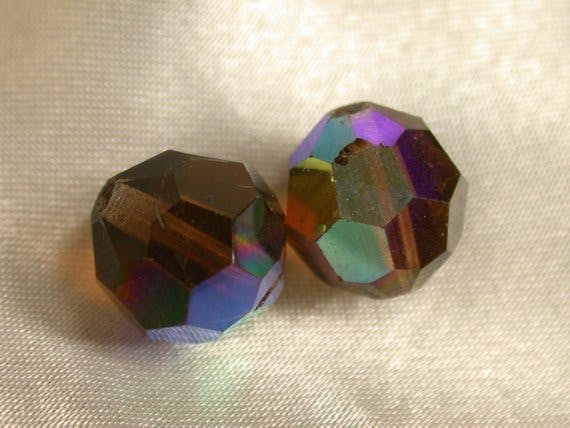
Identifying Glass Gemstones
Manufactured Origins
One of the key ways to identify glass gemstones is by their manufactured origins. Unlike natural gemstones, which are created by geological processes over millions of years, glass gemstones are man-made. This can be determined by examining the piece for telltale signs of manufacturing, such as uniformity of color and texture, and the presence of mold marks or bubbles.
Inclusions as Indicators
Inclusions, or internal flaws, can also be indicative of glass gemstones. While natural gemstones can have inclusions, glass gemstones often exhibit distinctive patterns and shapes of inclusions that are a result of the manufacturing process. These inclusions can vary greatly depending on the techniques used to create the glass gemstone, providing further evidence of its man-made origins.
Mold Marks and Characteristics
Another clue to identifying glass gemstones is the presence of mold marks and characteristics. Glass gemstones are often created using molds, which can leave behind distinct marks or patterns on the surface of the stone. These marks can include seam lines or ridges that indicate the piece was formed using a mold. Additionally, the shape and size of the gemstone can provide further clues, as natural gemstones tend to have more irregular shapes and sizes.
Glass vs Natural Gemstones
When trying to determine if a gemstone is glass or natural, there are several key differences to look out for. Natural gemstones are often valued for their rarity, clarity, and natural inclusions, whereas glass gemstones are prized for their vibrant colors and affordability. Additionally, natural gemstones are typically harder and more durable than glass gemstones, making them less prone to scratching. Visual examination, as well as consultation with a gemstone expert, can help in distinguishing between glass and natural gemstones.

Trade Names and Varieties of Glass Gemstones
Aurora Borealis
Aurora Borealis is a popular trade name for a type of glass gemstone that has a special coating applied to its surface to create a vibrant, iridescent effect. This coating reflects light in a way that mimics the colors of the aurora borealis, creating a stunning play of colors on the surface of the gemstone. Aurora Borealis gemstones are often used in statement jewelry pieces, adding a touch of enchantment and intrigue.
Goldstone
Goldstone is a type of glass gemstone that is known for its sparkly appearance. It is created by adding metallic copper flakes to the molten glass mixture, which creates a glittering effect reminiscent of precious metals. Goldstone is often used in jewelry designs that aim to capture the look of gold or bronze without the high price tag. Its stunning sparkle and rich color make it a popular choice for both casual and formal jewelry.
Rhinestone
Rhinestone is a term used to describe clear or colored glass gemstones that are faceted to resemble diamonds. Rhinestones are often used as a more affordable alternative to diamonds in jewelry designs, offering a similar sparkle at a fraction of the cost. From costume jewelry to high-end fashion accessories, rhinestones have become a staple in the world of glass gemstones, allowing anyone to add a touch of elegance and glamour to their collection.
Uranium Glass
Uranium Glass, also known as Vaseline Glass, is a type of glass gemstone that contains small amounts of uranium. This gives the glass a distinctive yellow or green fluorescence under ultraviolet light, creating a unique and captivating effect. Uranium Glass was popularized in the late 19th and early 20th centuries and is now highly sought after by collectors. Its vibrant color and unusual properties make it a standout choice in glass gemstones.
Other Varieties
In addition to the trade names mentioned above, there are many other varieties of glass gemstones available. These include opalite, moonstone glass, and cat’s eye glass, among others. Each variety offers its own unique characteristics and aesthetic appeal, allowing individuals to find the perfect glass gemstone to suit their personal style and preferences.

Treatment and Imitation of Glass Gemstones
Color Imitation
Glass gemstones can be treated to imitate different gemstone colors. This is achieved by applying a thin layer of colored coating to the surface of the glass, creating the appearance of a specific gemstone. For example, a clear glass gemstone can be coated with a red-colored film to mimic the look of a ruby. This allows individuals to enjoy the beauty of a variety of gemstone colors without the high cost associated with natural gemstones.
Creating Gemstone Effects
In addition to color imitation, glass gemstones can also be treated to create different gemstone effects. For example, a glass gemstone can be faceted to mimic the sparkle and brilliance of a diamond. It can also be coated with a metallic film to create a mirrored or reflective effect. These treatments allow individuals to achieve the look of their favorite gemstones or effects without the need for expensive natural gemstones.
Common Treatments
Some common treatments applied to glass gemstones include heat treatments and coatings. Heat treatments are used to enhance the color and clarity of the glass, giving it a more appealing appearance. Coatings, as mentioned earlier, are used to imitate different gemstone colors and effects. It is important to note that treatments can vary greatly in their durability and longevity, so it is essential to handle and care for treated glass gemstones with caution.
Ethical Considerations
When purchasing glass gemstones, it is important to consider the ethical implications of their production. Glass gemstones offer a more sustainable alternative to mined gemstones, as they can be created without the need for large-scale mining operations. However, it is still essential to ensure that the glass gemstones are produced using ethical labor practices and environmentally responsible manufacturing processes. By supporting companies that prioritize these factors, individuals can enjoy their glass gemstone jewelry with peace of mind.
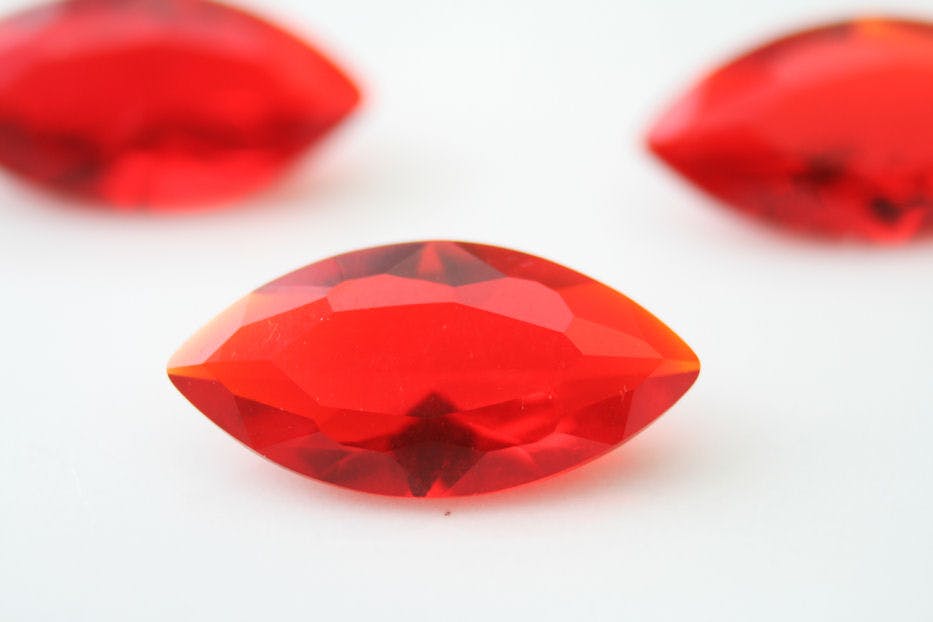
Care and Cleaning of Glass Gemstones
General Cleaning Guidelines
To keep your glass gemstone jewelry looking its best, regular cleaning is important. To clean your glass gemstone jewelry, simply soak it in warm, soapy water and gently scrub it with a soft brush or cloth. Be sure to rinse the jewelry thoroughly and dry it with a soft, lint-free cloth to avoid any water spots. This simple cleaning routine will help to remove dirt and oils that can dull the appearance of your glass gemstone jewelry.
Avoiding Harsh Chemicals
When cleaning glass gemstones, it is important to avoid using harsh chemicals or abrasive cleaners. These can potentially damage the surface of the glass and strip away any coatings or treatments that may be present. Instead, opt for mild soap and warm water, as this will effectively clean your glass gemstone jewelry without causing any harm.
Special Considerations for Treated Glass
If your glass gemstone jewelry has been treated with coatings or other enhancements, it is important to take special care when cleaning. Some coatings or treatments may be more delicate than others and can be easily damaged by harsh cleaning methods. Consult the manufacturer’s guidelines or a jewelry professional for specific cleaning instructions for your treated glass gemstones to ensure their longevity and beauty.
Storing and Protecting Glass Jewelry
When not wearing your glass gemstone jewelry, it is important to store it properly to prevent any potential damage. Keep your jewelry in a separate compartment or jewelry box to avoid scratching or chipping. Additionally, avoid exposing your glass gemstone jewelry to extreme temperatures or direct sunlight, as this can cause fading or discoloration. With proper storage and care, your glass gemstone jewelry will continue to sparkle and shine for years to come.

